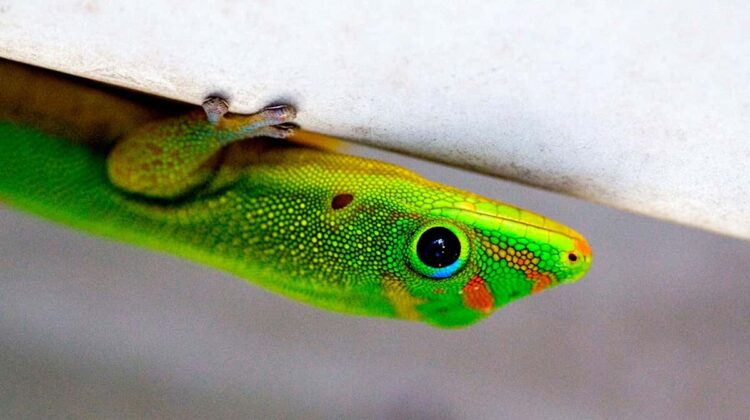
Lizards, those fascinating reptilian creatures, are renowned for their incredible ability to walk effortlessly on vertical surfaces and even hang upside down. This remarkable feat is achieved through a phenomenon known as van der Waals forces, a mechanism that governs interactions between non-bonded atoms, molecules, or surfaces. But even in their gravity-defying endeavors, lizards encounter challenges when friction levels dip to a minimum.
The enigmatic reptilian talent that enables lizards to traverse upside down hinges on van der Waals forces—an intricate interplay between atoms, molecules, and surfaces. Certain lizard species, such as geckos, possess microscopic foot hairs that generate these forces. These reptiles can adjust the angle of these specialized hairs, allowing them to peel their feet away from surfaces to prevent sticking. However, the inclusion of materials like polytetrafluoroethylene (PTFE) disrupts their adeptness. Intriguingly, geckos are yet to evolve to cope with PTFE-coating.
At the core of geckos’ ability lies a simple principle: like charges repel while opposite charges attract. Electrostatic induction and van der Waals forces are the hidden powers that geckos utilize to maneuver on walls and ceilings. Although neither their feet nor the surfaces are charged, the molecules comprising these components exhibit polarity. This phenomenon also transpires in water, where the positive hydrogen end of a molecule repels the negative oxygen end.
Picture a scenario where the molecules on the gecko’s feet surface carry a negative charge. By repelling the negative poles of ceiling molecules, the gecko induces a positive charge on its walking surface. This interplay of opposite charges between the gecko’s feet and the surface results in electrostatic attraction.
The binding force between uncharged molecules is termed a van der Waals force. While not as potent as the interactions between charged particles, geckos compensate for this by maximizing the surface area of their feet that contacts the surface. Gecko feet are equipped with supple ridges covered in countless hair-like structures called setae. These setae are adorned with numerous minute bristles known as spatulae, significantly amplifying the surface area over which van der Waals forces can exert influence.

Astoundingly, some geckos are capable of hanging from a solitary toe, showcasing the incredible adhesive capacity of their feet. Researchers are diligently working to create gecko-inspired adhesive tape that maintains its stickiness even after prolonged use.
In a Spiderman-esque fashion, certain lizards, with their minute hair-covered feet, effortlessly cling to walls. With millions of these microscopic hairs, geckos boast an expansive surface area that significantly enhances friction when they engage with surfaces that appear smooth to the human eye. The force of friction arises from intermolecular bonds between the hairs and the surface, allowing geckos to adhere to nearly any surface except PTFE. The uniform charge of PTFE presents a formidable challenge for the gripping action of gecko hairs, a phenomenon akin to water sliding off this material.
Taking cues from nature’s marvels, scientists at the University of Manchester have ingeniously crafted synthetic hairs to mimic gecko feet. This innovation has birthed a silicon-based adhesive tape, fostering the creation of reusable sticky notes and potentially revolutionizing the medical field with biodegradable stitches and wound dressings that leave no harmful residue behind.
The world of lizards, particularly geckos, stands as a captivating realm where natural adaptations inspire technological advancements and offer insights into the intricate interplay of forces that enable these creatures to defy gravity and walk where few others can.

Leave a Reply